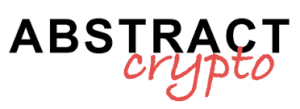The Federal Deposit Insurance Corporation (FDIC) announced the acquisition of Silicon Valley Bank (SVB) by First Citizen Bank & Trust Company, with a $20 billion bankruptcy cost.
Silicon Valley Bank (SVB) and its acquisition by First Citizen
The government-owned Federal Deposit Insurance Corporation (FDIC) announced the acquisition of Silicon Valley Bank (SVB):
Today, we entered into an agreement with First-Citizens Bank & Trust Company to purchase and assume all deposits and loans of Silicon Valley Bridge Bank, N.A.https://t.co/vjDsnQxhrr pic.twitter.com/MI5lXN5y6r
— FDIC (@FDICgov) March 27, 2023
In essence, First Citizens Bank & Trust Company, headquartered in Raleigh, North Carolina, acquired all the deposits and loans of the troubled SVB bank, as well as its 17 branches it owned in the United States.
Specifically, SVB had $167 billion in total assets and about $119 billion in total deposits.
Today’s transaction involved the purchase of about $72 billion of SVB’s assets at a discount of $16.5 billion. Whereas, about $90 billion in securities and other assets will remain in receivership to be disposed of by the FDIC.
The 17 former branches of Silicon Valley Bridge Bank, National Association, are opening as First-Citizens Bank & Trust Company on Monday 27 March 2023.
The announcement specifies that SVB customers should continue to use their current branch until they receive notice from First-Citizens that system conversions have been completed to allow full banking service at all other branches.
In spite of everything, there is no mention of cryptocurrencies in this announcement, as opposed to the announcement of the Signature Bank acquisition.
Silicon Valley Bank (SVB) and the $20 billion bankruptcy cost
In its announcement, the FDIC goes on to estimate the cost of the bank’s failure as follows:
“The FDIC estimates the cost of the failure of Silicon Valley Bank to its Deposit Insurance Fund (DIF) to be approximately $20 billion. The exact cost will be determined when the FDIC terminates the receivership.”
In this regard, there are those who commented on this figure, adding that this would be the most expensive bank failure in the US.
FDIC estimates that Silicon Valley Bank’s failure will cost the deposit insurance fund $20B
That’d make it the costliest bank failure in US history, beating IndyMac’s ’08 failure (which cost $12.4B) and eating 14% of the insurance fund, which comes from an assessment on banks. pic.twitter.com/kRwRuSIyL4
— Joey Politano
(@JosephPolitano) March 27, 2023
And indeed, compared to Signature Bank’s estimated DIF cost of about $2.5 billion, SVB’s losses are significantly higher.
First Citizens’ shares rise 50%
The news of the bailout by First Citizen Bank & Trust Company made its FCNCA shares jump 50%.
Indeed, FCNCA shares rose on 27 March from $582.55 to an impressive $852.69 and have remained at that level. At the time of writing, First Citizens BancShares Inc shares are worth $895.61.
The CEO of First Citizen, Frank B. Holding, commented on Twitter:
“We are proud that the FDIC has selected First Citizens to take on the important relationships with Silicon Valley Bank’s depositors and customers, and in turn, strengthen the banking system and the U.S. economy.” – Frank B. Holding, Jr. Read more: https://t.co/WK00OrcQY9 pic.twitter.com/qUxZQRo8pt
— First Citizens Bank (@firstcitizens) March 27, 2023
Not only that, in his article, Holding describes the bank as follows:
“First Citizens has a reputation for financial strength, exceptional customer service and prudent lending that spans 125 years. We have partnered with the FDIC to successfully complete more FDIC-assisted transactions since 2009 than any other bank, and we appreciate the confidence the FDIC has placed in us once again.
We look forward to building relationships with our new customers and positioning our company for continued success as we affirm our commitment to support the integrity of our nation’s banking system.”
Silicon Valley Bank (SVB) and the unresolved USDC case
Speaking of cryptocurrencies, the present news finds no support for Circle’s stablecoin, USD Coin (USDC), which continues to lose market capitalization.
In fact, since the collapse of SVB, USDC has been the only crypto to suffer an outflow on supply estimated at 3.9 billion. Not only that, USDC’s holders seem to have decided to abandon the idea that USDC was safe, despite the fact that Circle’s CEO had provided reassurance about the coin’s solvency.
The thing is, Circle had declared the day after the bank’s fall that 3.3 billion of USDC reserves remained anchored in Silicon Valley Bank.
That day marked the beginning of the decline in USDC’s market capitalization as well as its de-peg to the US dollar.
Looking at the graph, as of 10 March 2023, USDC’s market cap of $43.55 billion began to decline day by day, reaching $33.42 billion today.
USDC’s request to the Fed for help
Last week, Circle asked the US Federal Reserve for help, asking them to support the USDC stablecoin with US dollars held at the Fed.
A request that would bring back confidence about the stablecoin’s greater stability and security for its users who have been preferring other stablecoins, such as Tether (USDT), for over two weeks now.
Basically, at the conference held at Warwick Business School, Circle vice president Tarleton Watkins discussed the potential long-term solution for retail stablecoins.
Watkins would suggest that a wholesale Central Bank Digital Currency (CBDC) at the Federal Reserve could be used as a back-up tool for stablecoins. This would be a more secure and stable option for users.
Not only that, Watkins also advised stablecoin issuers to hold dollar reserves at the Fed, rather than relying on various financial partners.

